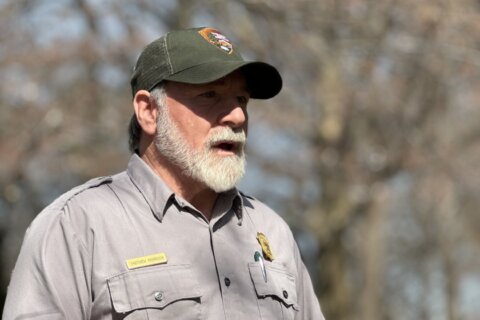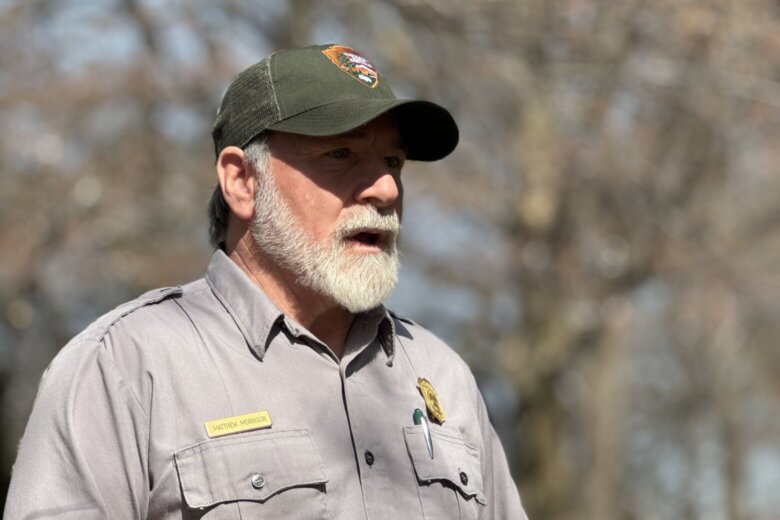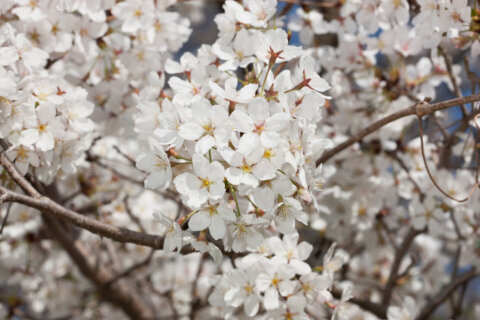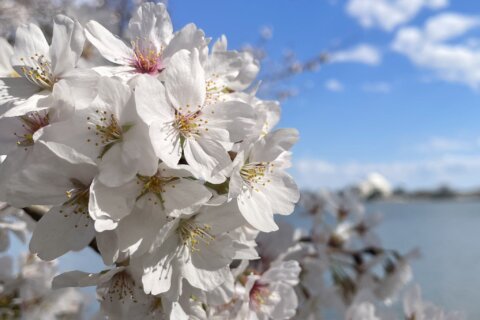
As the cherry blossoms approach peak bloom at the National Mall, the National Park Service is at work, and the sound of chain saws rang out near the paddle boats as tourists snapped photos of D.C.’s blossoms, which are currently at the peduncle elongation stage.
Matthew Morrison, chief arborist for the National Mall and Memorial Parks, has been taking care of the trees in the parks for five years, but has 40 years experience as an arborist.
It used to be that pruning would only be done when trees were dormant, but Morrison told WTOP, “As the science evolves, the timing at which we prune trees also changes.”
Now, he said research shows that pruning when trees are at the start of flowering won’t harm them.
“When you make the cuts this time of year, the tree is actually healing,” Morrison said.
Morrison said visitors to the National Mall can see pruning and tree care operations going on year-round.
“We’ve got roughly 3,700 cherry trees, but we have 20,000 trees in the park,” Morrison said.
Caring for the entire tree is vital, Morrison said, including the parts you can’t see. He explained the cherry trees have grown over time from individual trees to a forest.
“You can think of that forest as one superorganism,” he said.
The connected network of roots below ground contains beneficial fungi which “allows them to transport information, communicate,” and even carry food to each other. Caring for that system has changed how the ground around the trees is treated.
More Cherry Blossom Festival News
- How will DC’s cherry blossoms react to a cold front after an unseasonably warm week?
- FAQ: What you need to know about the National Cherry Blossom Festival 2024
- DC’s cherry blossoms closing in on peak bloom with ‘peduncle elongation’
- Identifying D.C. cherry blossoms: Do you know your Yoshino from your Kwanzan?
- Enjoy D.C. cherry blossoms from a private hot tub or tiki bar — on the Potomac
- Miles from the Tidal Basin, an alternative for cherry blossom lovers
Now, visitors to the National Mall may find the ground around the trees carpeted in mulch — wood chips from the National Park Service’s own tree trimming projects. That aids in giving the tree roots some cushioning from the ground compaction that happens as millions of tourists visit each year.
Morrison said the thing about trees is that they tell the story of the care they received, so decades from now, arborists can “see how we failed, and we see how we’ve confirmed that we did this right.”
As crowds begin flocking to the Tidal Basin in the days ahead of peak bloom, Morrison told WTOP, “These trees are quite literally on an international stage, so there’s no way you could tire of it.”
Peak bloom, according to the National Park Service, is expected between March 23 and 26.
Get breaking news and daily headlines delivered to your email inbox by signing up here.
© 2024 WTOP. All Rights Reserved. This website is not intended for users located within the European Economic Area.









